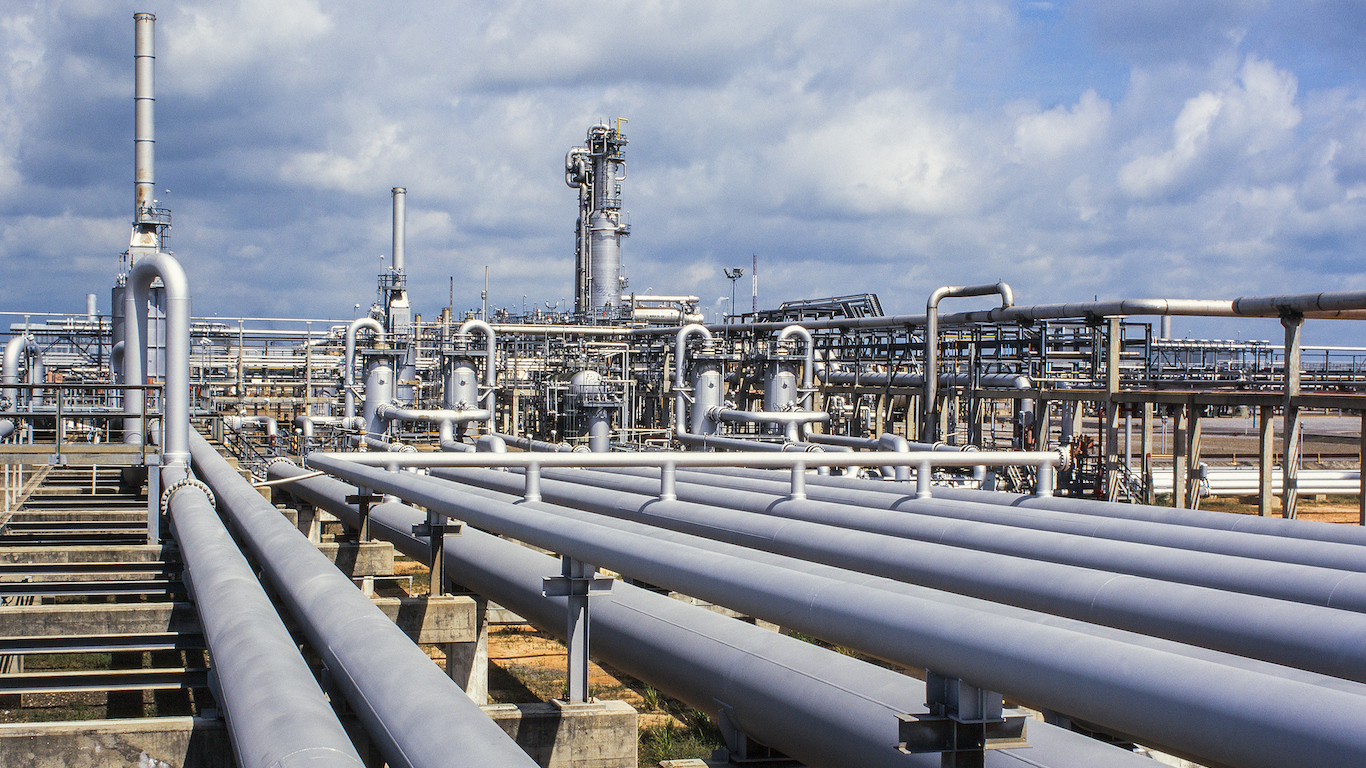
Chesapeake Energy Corp. (NYSE: CHK) reported second-quarter 2018 results before markets opened Wednesday. The oil and gas exploration and production company posted adjusted earnings per share (EPS) of $0.15 on revenues of $2.26 billion. In the same period a year ago, the company reported adjusted EPS of $0.18 on revenues of $2.28 billion. Second-quarter results also compare to consensus estimates for EPS of $0.15 and $2.28 billion in revenues.
The company’s total revenues from oil, natural gas and natural gas liquid (NGL) sales were down 23%. Average daily production rose slightly from 528,000 barrels of oil equivalent per day in the second quarter of 2017 to 530,000 barrels this year.
The average realized price per barrel of oil rose from $51.65 last year to $57.16, and the price per thousand cubic feet of natural gas dipped from $2.71 to $2.64. On an oil-equivalent barrel basis, the average production expense slipped from $2.92 to $2.86. Gathering, processing and transportation costs dropped from $7.44 per oil-equivalent barrel to $7.04.
The company’s outlook for fiscal year 2018 was changed substantially, and mostly toward the downside. The annual oil production estimate declined from a range of 51 million to 55 million barrels to a new range of 31.5 million to 33.5 million barrels, and the loss per barrel due to realized hedging effects is forecast to rise from $10.20 to $11.00.
The natural gas production estimate for the year is now 790 billion to 830 billion cubic feet, and NGL production has dropped to a new range of 17 million to 19 million barrels.
2018 production expenses are forecast to rise more than previously expected, at $2.85 to $2.95 per barrel of oil equivalent compared with $2.81 in 2017. Capex is forecast in a range of $2.0 billion to $2.3 billion, compared to approximately $2.46 billion in 2017.
Production may be rising, but price increases have stalled, and Chesapeake’s hedges are going to cost them more unrealized losses. Natural gas hedges are expected to add $0.14 per thousand cubic feet to revenue.
Chesapeake maintained its estimate of adjusted EBITDA in a range of $2.25 billion to $2.45 billion.
Analysts are calling for third-quarter EPS of $0.17 per share on revenues of $2.3 billion, and EPS of $0.81 per share on revenues of $9.38 billion for the full year.
CEO Doug Lawler said:
Chesapeake continues to make significant progress in achieving our strategic priorities of reducing leverage, increasing margins and reaching cash flow neutrality. Last week’s announcement to sell our Utica position will allow us to retire nearly $2 billion of outstanding debt, while the recent significant ramp in our Powder River Basin volumes positions us to replace the divested Utica EBITDA within a year. For the third consecutive quarter, we have recorded impressive cash flow driven by better-than-expected oil production. We expect to see continued meaningful improvements in growing our cash flow as our total oil production, adjusted for asset sales, moves higher throughout the rest of 2018 and into 2019.
Chesapeake’s debt balance at the end of the quarter was $9.71 billion, compared to a balance of $9.98 billion at the end of December 2017.
Chesapeake’s shares traded down more than 6% in Wednesday’s premarket to $4.42, after closing Tuesday at $4.72. The stock’s 52-week range is $2.53 to $5.60, and the consensus target price was $4.64 before this report. The highest price target was $7.00 a share.
Get Ready To Retire (Sponsored)
Start by taking a quick retirement quiz from SmartAsset that will match you with up to 3 financial advisors that serve your area and beyond in 5 minutes, or less.
Each advisor has been vetted by SmartAsset and is held to a fiduciary standard to act in your best interests.
Here’s how it works:
1. Answer SmartAsset advisor match quiz
2. Review your pre-screened matches at your leisure. Check out the advisors’ profiles.
3. Speak with advisors at no cost to you. Have an introductory call on the phone or introduction in person and choose whom to work with in the future
Get started right here.
Thank you for reading! Have some feedback for us?
Contact the 24/7 Wall St. editorial team.



